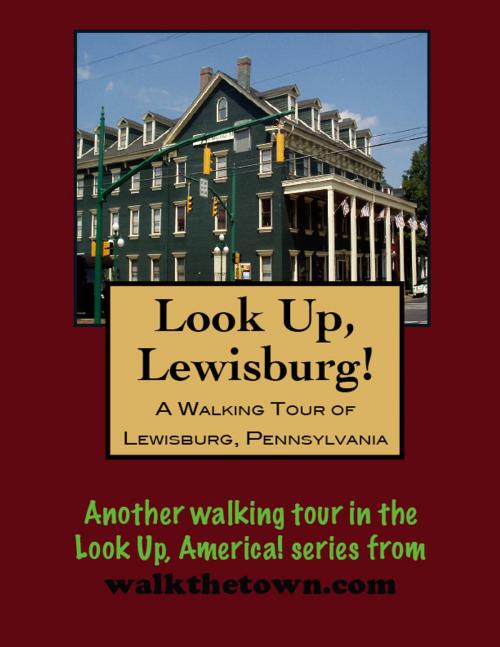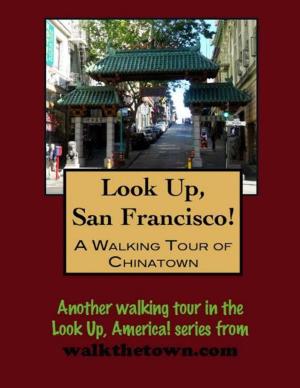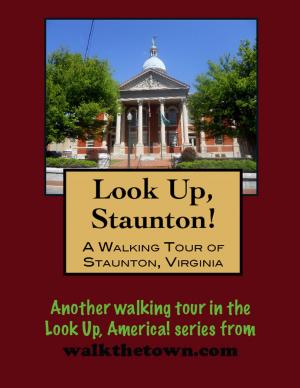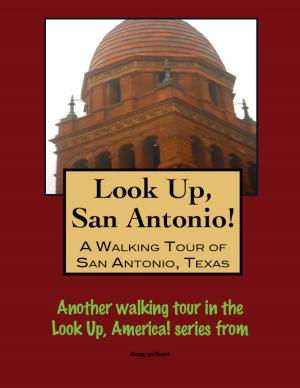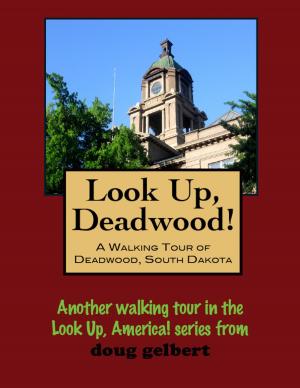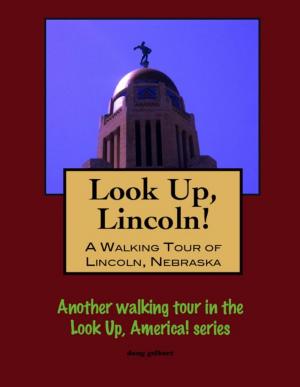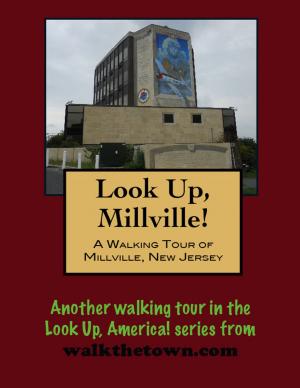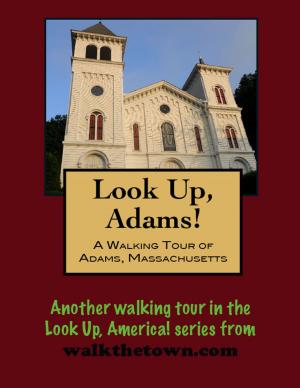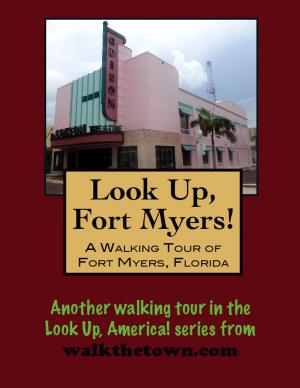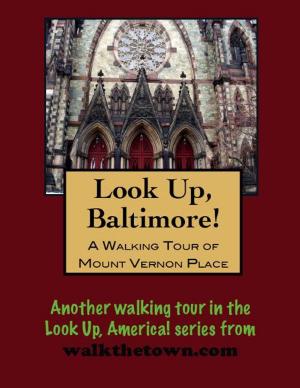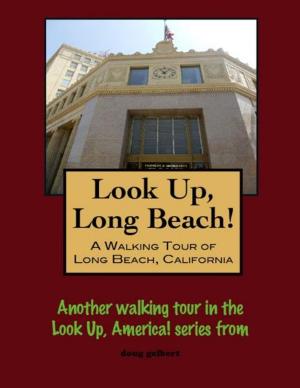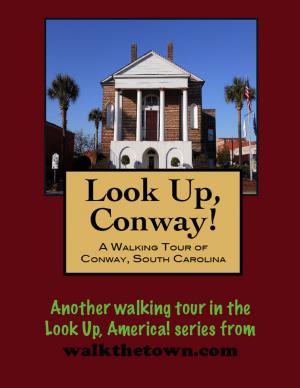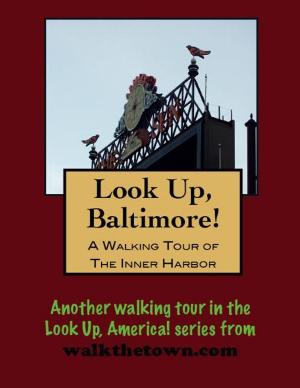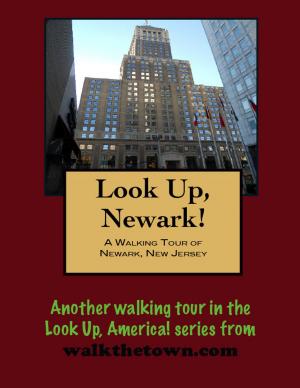| Author: | Doug Gelbert | ISBN: | 9781458141217 |
| Publisher: | Doug Gelbert | Publication: | January 30, 2011 |
| Imprint: | Smashwords Edition | Language: | English |
| Author: | Doug Gelbert |
| ISBN: | 9781458141217 |
| Publisher: | Doug Gelbert |
| Publication: | January 30, 2011 |
| Imprint: | Smashwords Edition |
| Language: | English |
There is no better way to see America than on foot. And there is no better way to appreciate what you are looking at than with a walking tour. Whether you are preparing for a road trip or just out to look at your own town in a new way, a downloadable walking tour is ready to explore when you are.
Each walking tour describes historical and architectural landmarks and provides pictures to help out when those pesky street addresses are missing. Every tour also includes a quick primer on identifying architectural styles seen on American streets.
Lewisburg was founded in 1784 by Ludwig Derr. A settler of the area (since as early as 1763-1769), Derr had purchased several tracts of land from the family of William Penn and other neighboring land owners; the largest of which was known as “The Prescott.” In 1783, he worked with Samuel Weiser (son of Conrad Weiser, the famous Indian liaison who died in 1760, and with whose family Derr’s own paternal family had been friends) to layout his combined land tracts, and create Derrstown.
The name was later, after Derr’s death, changed to Lewisburg. Much has been considered regarding ‘how’ the name changed from Derrstown to Lewisburg. The most likely truth is that Derr’s first name “Ludwig” translated into English as “Louis” but, being of German decent, it was spelled “Lewis”. Later, after Derr’s death, the traditional Germanic “burg” was appended to his first name to create Lewisburg.
The street names that run East and West are a local urban mystery. St. George, St. Catherine, and St. Louis etc...they appear to be named for Saints. However, since Derr was a Lutheran, and did not pay homage to Catholic saints, this is unlikely. Rather, the street names are more likely named for Derr’s family members, as those streets are consecutively parallel, and emanate from what was then Derr’s home, and the location of the first available lot sold (which were both situated on, what is now, Brown Street). George was Ludwig’s son, his wife Catherine and Ludwig/Lewis (sic) himself. The other original street names that still exist are St. John, St. Mary and St. Anthony...and are probably the names of other children from families with whom Derr’s own family were friends.
Another mystery surrounding Lewisburg, is the disappearance of its founder Ludwig Derr. After selling many lots of land, Derr set off for Philadelphia to sell additional lots. Shortly after arriving, records indicate some of his lots had sold. However, Ludwig Derr simply disappears from history in that city. Derr’s son George went to Philadelphia to search for his father, but returned a short time later unsuccessful.
Over the centuries, Lewisburg has been a center of commerce in Union County. Its tributary off of the Susquehanna River was used for logging and shipping, and remains of old factories and other ancient stone structures exist along the river banks. The town’s most famous landmark are its three-globe streetlights. Installation of the cast iron standards began in 1912 when Market Street was being paved with brick. Today approximately 1,500 of these lights line Lewisburg’s streets. The standards are made by the nearby Watsontown Foundry and wired by Citizen Electric.
This walking tour will begin five blocks away from the Susquehanna River in Hufnagel Park and head down Market Street towards the water...
There is no better way to see America than on foot. And there is no better way to appreciate what you are looking at than with a walking tour. Whether you are preparing for a road trip or just out to look at your own town in a new way, a downloadable walking tour is ready to explore when you are.
Each walking tour describes historical and architectural landmarks and provides pictures to help out when those pesky street addresses are missing. Every tour also includes a quick primer on identifying architectural styles seen on American streets.
Lewisburg was founded in 1784 by Ludwig Derr. A settler of the area (since as early as 1763-1769), Derr had purchased several tracts of land from the family of William Penn and other neighboring land owners; the largest of which was known as “The Prescott.” In 1783, he worked with Samuel Weiser (son of Conrad Weiser, the famous Indian liaison who died in 1760, and with whose family Derr’s own paternal family had been friends) to layout his combined land tracts, and create Derrstown.
The name was later, after Derr’s death, changed to Lewisburg. Much has been considered regarding ‘how’ the name changed from Derrstown to Lewisburg. The most likely truth is that Derr’s first name “Ludwig” translated into English as “Louis” but, being of German decent, it was spelled “Lewis”. Later, after Derr’s death, the traditional Germanic “burg” was appended to his first name to create Lewisburg.
The street names that run East and West are a local urban mystery. St. George, St. Catherine, and St. Louis etc...they appear to be named for Saints. However, since Derr was a Lutheran, and did not pay homage to Catholic saints, this is unlikely. Rather, the street names are more likely named for Derr’s family members, as those streets are consecutively parallel, and emanate from what was then Derr’s home, and the location of the first available lot sold (which were both situated on, what is now, Brown Street). George was Ludwig’s son, his wife Catherine and Ludwig/Lewis (sic) himself. The other original street names that still exist are St. John, St. Mary and St. Anthony...and are probably the names of other children from families with whom Derr’s own family were friends.
Another mystery surrounding Lewisburg, is the disappearance of its founder Ludwig Derr. After selling many lots of land, Derr set off for Philadelphia to sell additional lots. Shortly after arriving, records indicate some of his lots had sold. However, Ludwig Derr simply disappears from history in that city. Derr’s son George went to Philadelphia to search for his father, but returned a short time later unsuccessful.
Over the centuries, Lewisburg has been a center of commerce in Union County. Its tributary off of the Susquehanna River was used for logging and shipping, and remains of old factories and other ancient stone structures exist along the river banks. The town’s most famous landmark are its three-globe streetlights. Installation of the cast iron standards began in 1912 when Market Street was being paved with brick. Today approximately 1,500 of these lights line Lewisburg’s streets. The standards are made by the nearby Watsontown Foundry and wired by Citizen Electric.
This walking tour will begin five blocks away from the Susquehanna River in Hufnagel Park and head down Market Street towards the water...
